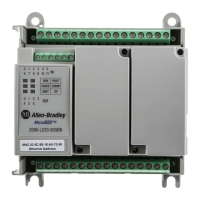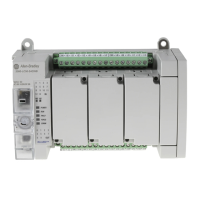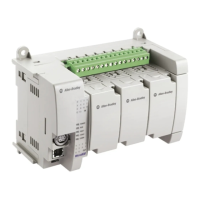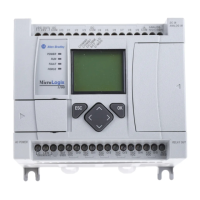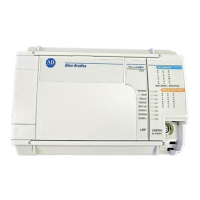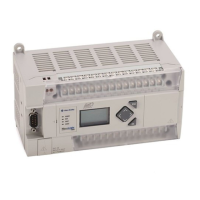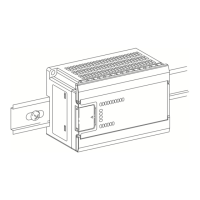Rockwell Automation Publication 2080-UM003A-EN-E - March 2013 9
Discrete and Analog Expansion I/O Features Chapter 2
Convert Analog Value to Data Format Value
The formula for converting an analog value x to a data format value y (or
conversely, deriving data format value y to analog value x) is as follows:
Y = ((X - Minimum Value of X Range)*(Range of Y)/(Range of X)) +
(Minimum Value of Y Range)
Example 1:
Find the analog value Y of Type/Range 4…20 mA when the Raw/Proportional
Data X is -20000.
Given:
X = -20000
Minimum value of X Range = -32768
Range of X = 32767 - (-32768) = 65535
Range of Y = 21- 3.2 = 17.8
Minimum value of Y Range = 3.2
Using the conversion formula:
Y = (-20000 - (-32768))*17.8/65535 + (3.2) = 6.668 mA
Example 2:
Find the Raw/Proportional value (Y) of 10 mA (X) for type/range 4…20 mA.
Given:
X = 10 mA
Minimum Value of X Range = 3.2 mA (Minimum value of 4…20 mA)
Range of X = 21 - 3.2 = 17.8 mA (Range of 4…20 mA)
Range of Y = 32767 - (-32768) = 65535 (Range of Raw/Proportional
Data)
Minimum Value of Y Range = -32768. (Min value of Raw/Proportional
Data)
Using the conversion formula:
Y = -7732.15 (decimals are not displayed)
Input Filter
For the input modules, 2085-IF4 and 2085-IF8, the input filter parameter lets
you specify the frequency filter type for each channel. Frequency filter type
affects noise rejection, as explained below. Select a frequency filter type
considering acceptable noise and response time.
Through the Connected Components Workbench software, you can configure
input filter as:
• 50/60Hz Rejection (default)
• No Filter
• 2-Point Moving Average
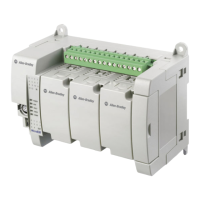
